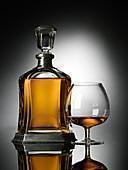What Causes Low Platelet Count?
A platelet (also known as thrombocyte) is defined as an irregular, disc-shaped element in the blood that assists in blood clotting. During normal blood clotting, the platelets clump together. Platelets are the smallest of the three major types of blood cells, the normal platelet count is 150,000 to 350,000 per microliter of blood, but since platelets are so small, they make up just a tiny fraction of the blood volume. The principal function of platelets is to prevent bleeding.
Platelets are produced in the bone marrow, along with the red blood cells and most of the white blood cells. Although platelets are often classed as blood cells, they are actually fragments of large bone marrow cells called megakaryocytes. As megakaryocytes develop into giant cells, they undergo a process of fragmentation that results in the release of over 1,000 platelets per megakaryocyte. The dominant hormone controlling megakaryocyte development is thrombopoietin.
When a blood vessel breaks, platelets gather in the area to attempt to block the blood flow. Important proteins called clotting factors are critical to the clotting process. Calcium, vitamin K, and a protein called fibrinogen help the platelets form a clot. Platelets are able to stop small blood vessel leaks or hinder bleeding on their own, but the clotting factors are required to permanently stabilize a clot.
Calcium and vitamin K must be present in blood to support the formation of clots. If your blood is lacking these nutrients, it will take longer than normal for your blood to clot. If these nutrients are missing, you could bleed to death. A healthy diet provides most people with enough vitamins and minerals, but vitamin supplements are sometimes needed.
Causes of Low Platelet Count
A low platelet count (called thrombocytopenia) refers to an abnormally low number of platelets, the particles in blood that help with clotting. As a result, blood does not clot normally. Abnormally low platelet count (below 20,000), can result in massive life threatening bleeding even when there is no injury.
Bone Marrow Disorders
The platelet count may decrease if the bone marrow does not produce enough platelets. Bone marrow disorders such as leukemia, lymphomas, infection with human immunodeficiency virus along with others can result in low platelet production.
Spleen Enlargement
Conditions that lead to enlargement of the spleen (spleen sequestration) will cause a decrease in the platelet count. An enlarged spleen contains more than the usual amounts of platelets, thus, fewer platelets are in the bloodstream. Myelofibrosis and advanced liver disease are examples of these conditions.
Medications
Blood thinning medicines will affect the platelet count. For example taking heparin may cause a low platelet count as it is a drug that makes blood less likely to clot (anticoagulant), thought there are times when it actually stimulates clot formation. Then the platelet count decreases because so many platelets are used up. Aspirin, nonsteroidal anti-inflammatory drugs (NSAIDs), and antihistamines may interfere with how platelets function, although the platelet count remains normal.
Alcohol
Excess drinking of alcohol may result in a low platelet count by damaging the bone marrow through toxins.






